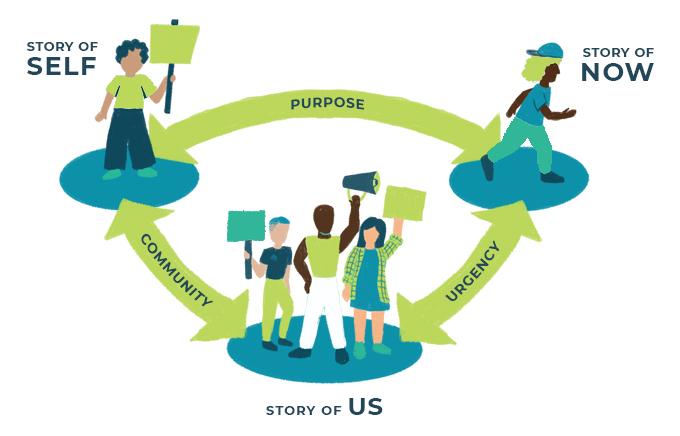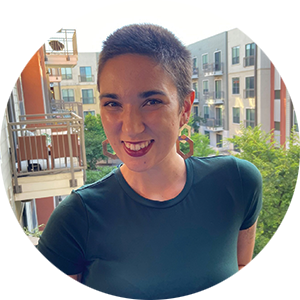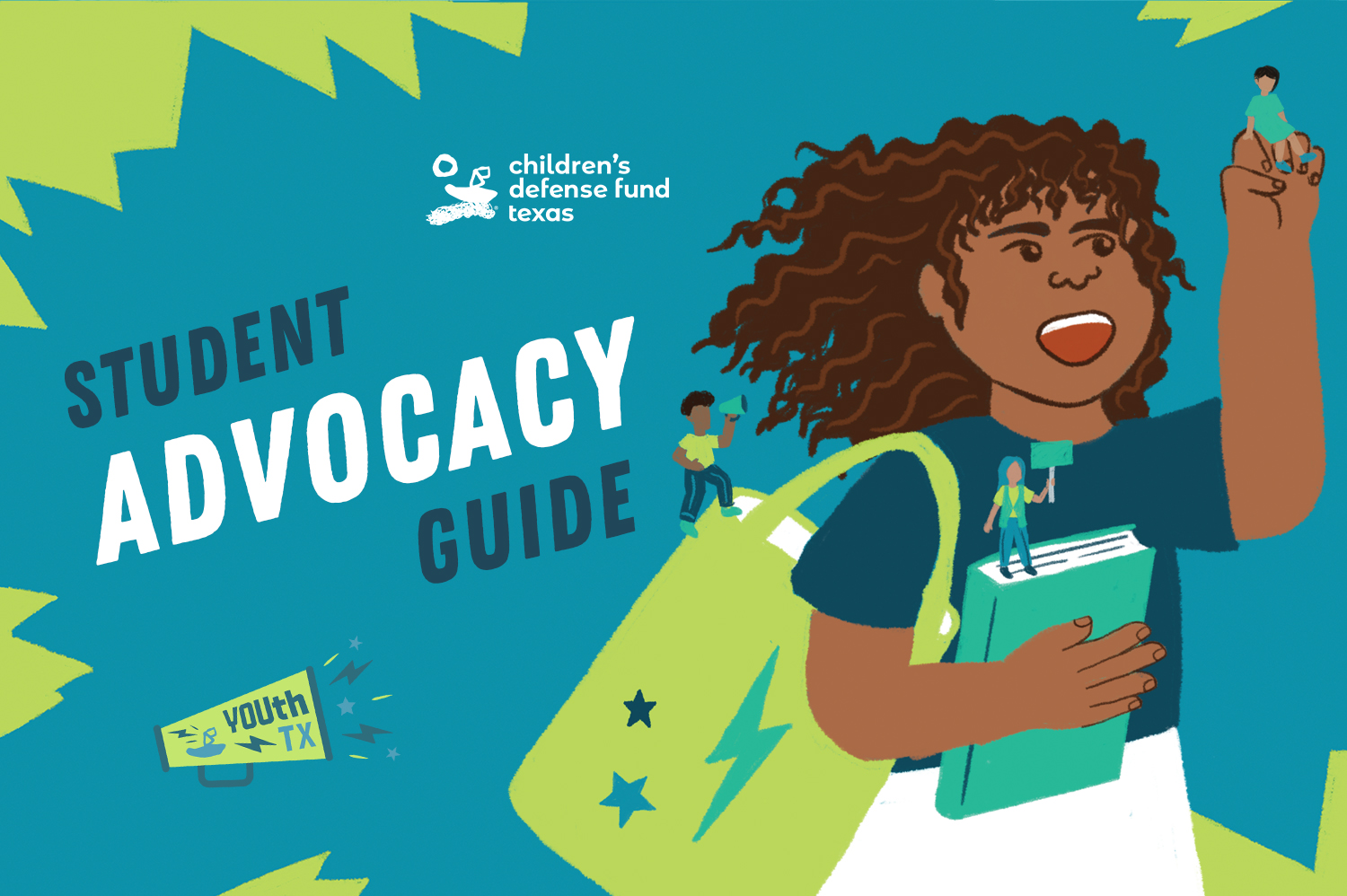
Schools serve you, their students. They should be places where you can learn from the past, understand the present, and prepare for the future–and you should be able to see yourself in each one.
But some politicians are using schools to advance their own agendas. It’s why they’ve tried to ban books, outlaw mask mandates, and write people of color and queer people out of our history books.
Young Texans across the state are fighting back to make sure schools do right by their students. We made this guide to help you do the same.
Lawmakers may have power over decisions that affect you, but you can build greater power with your peers, parents, and school community to make sure those decisions serve you.
Is this guide for me?
Yes. No matter your age or experience, if you’re a young person who cares about an issue in your community, this guide is for you.
Maybe you’ve never done advocacy before. Maybe you’ve never seen anyone who looks like you speak up where you live. That means it’s even more important to get involved. If something feels wrong to you, chances are others feel the same way. And, if another student sees you speak up, they might do the same. You might feel alone—at first—but you won’t be advocating alone. You have friends, family, your teachers. And you have us, too.
Most importantly: You are an expert. You’re an expert on what it’s like to be a student in your community, on what’s working well in your education, and what isn’t. That’s all the expertise you need. This guide is designed to help you use that expertise. Also, we do talk a lot about book bans and school censorship, but you can apply these tips to any issues you care about.
You are not alone in your advocacy!
The issues you face are likely also affecting many other students, even if you are the only one speaking up. Speaking up for the first time as a young person in my hometown’s city council meetings was nerve-wracking — but well worth it! I spoke on environmental concerns I had for park renovations ahead of a local bond election. Going against what the city proposed was scary, but my speaking out led to more people speaking their minds. This experience led me to get involved in my school district’s bond election and advocate for services that students in my district needed to be successful. Using your voice is always worth it and can make a difference for yourself and others.
First things first: take care of yourself
Know Your Rights.
You have the right to free speech under the First Amendment. That means there are no legal consequences for speaking up. You also have the right to freedom of information—including the books you can read in your school library. As you’re hearing controversy around banning certain books, know that the Supreme Court ruled in 1982 that school boards can’t remove books from school libraries just because board members disagree with the ideas in those books. Books may be removed for educational or safety reasons, but only after evaluating the whole book, and school districts must follow their processes to evaluate books with input from students, parents, librarians, and teachers.
Protect Your Energy.
It’s tough to be a student and advocate at the same time. Advocates struggle with burnout even when they’re not in school full time. It can also be draining to share your experiences over and over again. You might feel okay preparing to testify, but seize up during your testimony or feel deeply upset days later. Everyone is built differently. Here are a few resources to help develop your own strategies to protect your energy:
- A mental health toolkit from United We Dream, an immigrant youth-led organizing network;
- “Staying Resilient While Trying to Save the World”, a zine with tips to combat youth activism burnout from Amnesty International, an international non-governmental organization focused on human rights;
- A TEDTalk on the causes of burnout and suggestions of ways to respond;
- Additional mental health resources from Mental Health is Health, a health initiative focused on normalizing and providing resources for mental health.
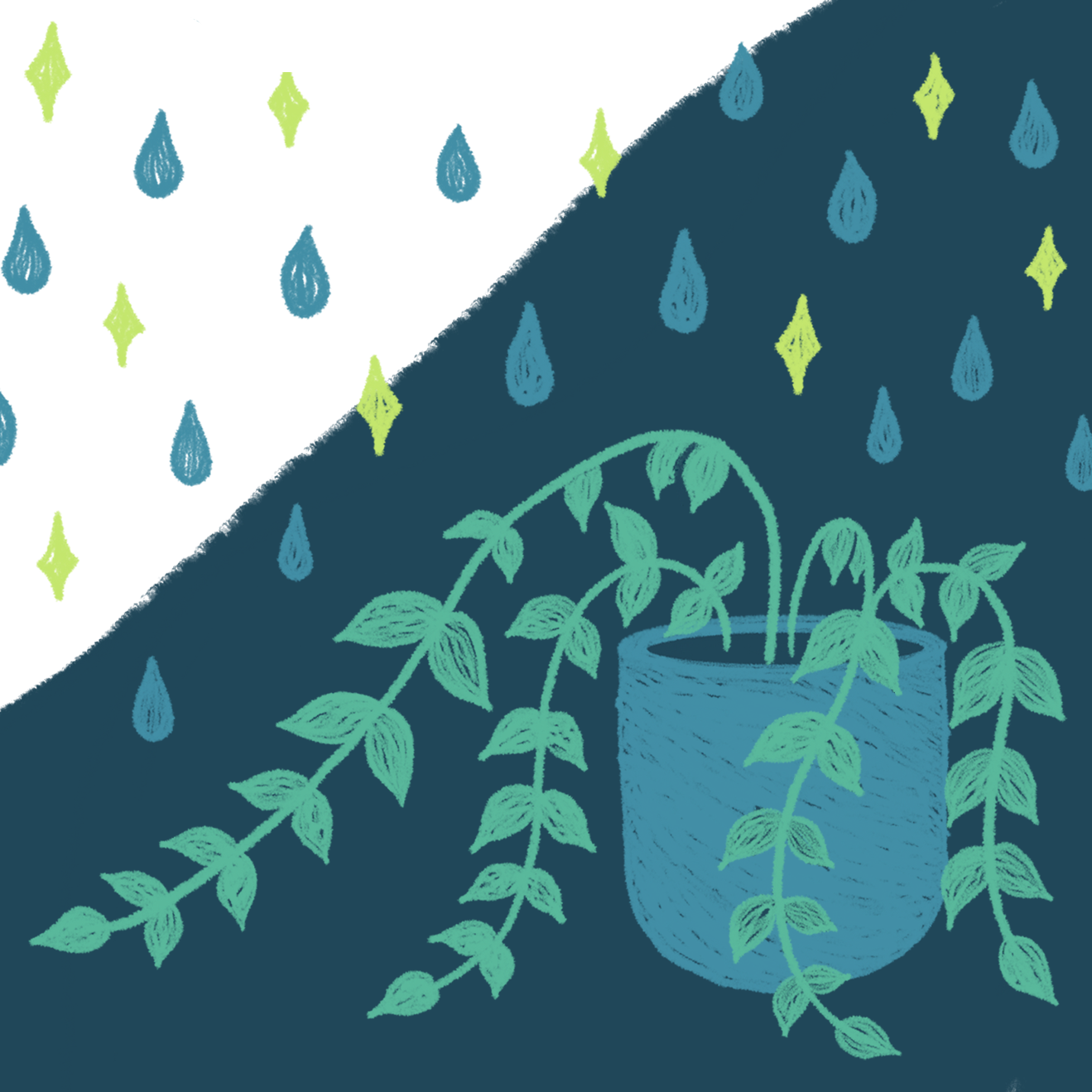
Know Your Story
Your story isn’t just your most powerful tool. It’s also your ‘why’ for speaking up—and convincing others to do the same.
Stories often form through a personal experience. But they don’t have to. They can come from what you’ve seen in your classrooms and hallways. They can be shaped from specific moments of injustice. Most of all, they touch on something that deeply affects you and resonates with your community.
When you know your story—and really know it—you can activate allies in your community. When your community knows its story, you can come together towards a common goal. In other words: you can make your leaders feel your collective power and the urgency of your goal.
We’ll get to tactics in a bit. For now, here are some tips to shape your story.
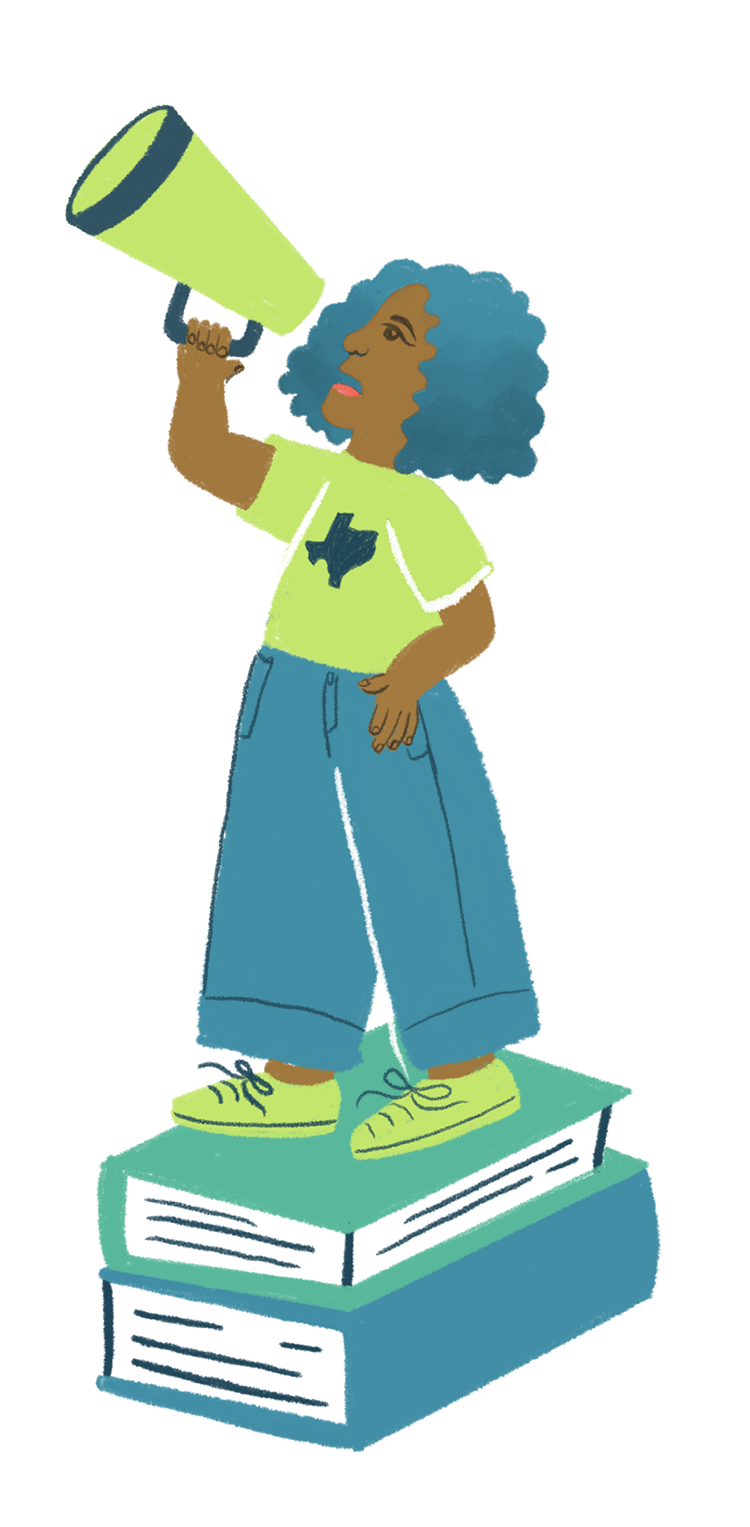
WHAT ARE YOUR VALUES AND VISION?
People are more likely to keep listening when they hear what you’re for before hearing what you’re against. Remind them you share the same values. Examples: the freedom to learn, an honest and full education, or your ability as a student to participate in your community.
WHAT IS THE HARM?
Next, define the problem. Cut through the rhetoric and speak to the real-world harms occurring in your school and in your life. Do include compelling facts if it makes sense, but connect them to how you or your community experience the problem. It’s easier for leaders to deny facts than it is to deny someone’s experience. You can also speak to potential harm—or what could happen if leaders don’t act.
WHAT IS YOUR ASK?
End on a specific action your audience must take to address the harm and help you reach your goal. Your ask may vary depending on who you’re talking to. Whoever your audience is, make sure they see themselves in the ask. Inspire them to feel like they can be part of the solution. For example, you might be asking a teacher to look over your testimony for a school board meeting, while asking a peer to sign up to testify with you. These will differ still from your ask to the school board members, which will directly address the harm.
Close by returning to your values and vision: show them what your school/community will look like if they join you to meet the goal.
And that’s it! You can use this basic formula whether you’re preparing to ask a teacher to help your cause, writing a petition to your school principal, or speaking at a school board meeting. You’ll soon find yourself telling your story in a variety of ways, to a variety of people. Always check how much time or space you have to share your story. And as with everything else, practice makes perfect.
If you’d like some examples to craft your message, here’s a great toolkit from our partners at We Make the Future, an organization working to reinstill hope in democracy and build a better tomorrow. Just remember that your experience is all the expertise you need.
BE CAREFUL
You’ll hear messages that try to derail the conversation, focus on misinformation, or create fear and anger. You’ll be tempted to respond. But remember: your message is strongest when you stay on it. The goal is not to win a debate. The goal is to tell your story, deliver your call-to-action, and inspire your audience to follow through.
Make Your Voice Heard
Once you know your story, you’ll need a plan. This part covers how to craft a goal, who to focus on, and a few different tactics to reach your goal.
WHAT IS YOUR GOAL?
Dream big first. Think about the future you want to build. What needs to happen to get there? Return to the present. What’s the best, most effective thing that can happen right now to move towards that future? This is your goal.

WHO’S YOUR TARGET?
Think about who has the authority to make that change. Who’s the ultimate decision maker? Here’s a quick rundown of who’s who in the education space: The State Board of Education sets the Texas Essential Knowledge and Skills (TEKS) for each subject, your local school board decides policies for your district, and your principal and teachers carry out those policies. When it comes to book bans, right now some individual teachers and schools are making those decisions without involving any public officials—largely out of fear as their work becomes more and more politicized.
HOW WILL YOU GET THERE?
Now we get to tactics! There are so many ways to convince your target to take action. Consider the time, resources, and support you have. Ultimately it comes down to what makes sense for you and your community. Here are just a few options:
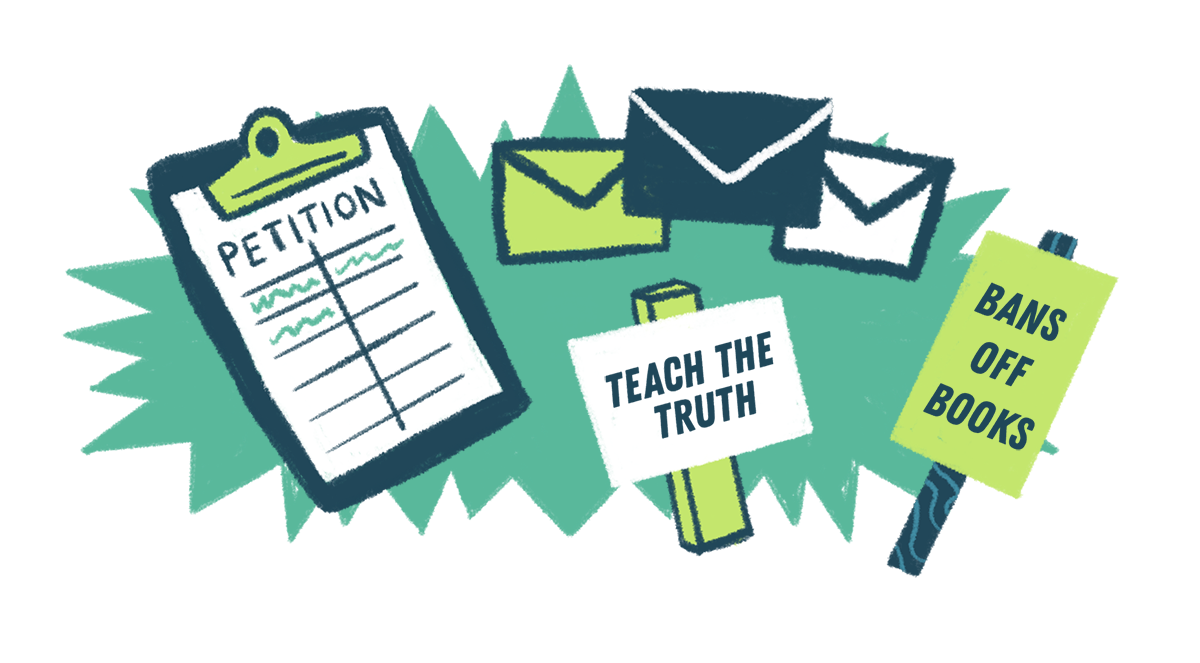
This isn’t always an option. When it is, it should be your go-to. Turning a target into an ally makes things easier. This can look like an e-mail, a one-on-one conversation, or a group meeting. Maybe you want a teacher to cover certain lessons, or a librarian to keep certain books, or your principal to bring certain resources to your school—and you think they might be receptive. Even if you’re not sure, it’s worth a try. If you don’t get a clear yes, that’s when you want to look at other tactics.
Use this resource from Scholastic.com.
Every school board holds regular meetings. Anyone can testify during the meeting, including and especially the district’s students. Just visit your district’s website to find out when they meet, how to sign up to testify, and how long your testimony can be. Making your ask at a school board meeting means you’ll have proof that the board heard your ask, and proof of their response, all on the public record. Check out this testimony template from our friends at Protect Schools.
Don’t forget: school board members are elected officials. If you can vote, make sure to keep an eye on your local school board races as well.
Use this school board meeting resource from Student Voice, a student-led group calling for equity in schools.
This is the difference between walking into a meeting on your own, and walking in with a list of hundreds of student signatures backing up your ask. Petitions demonstrate the power and will of the community. Now you’re asking nicely but sternly. The signatures and petition are delivered to the target all at once. Once you have the language for your petition, the work isn’t too bad. You can catch peers between classes, at lunch, after school—even on social media. It takes seconds to sign a name. You just need to craft the message and coordinate the logistics. Create a successful petition with this guide from the National Eating Disorders Association, a nonprofit organization that supports families and individuals affected by eating disorders.
Like petitions, this demonstrates the will of the community. You’re making your ask with dozens or even hundreds of people doing the same. E-mail campaigns do require a bit more work than petitions. You’ll need a template e-mail with a clear ask, but most of the work goes into reaching allies like parents, teachers, and student groups to urge them to act. At a minimum, your target can’t ignore you: they’ll be receiving a constant stream of e-mails until they do something. At a maximum, this action will crash their e-mail server. Then they have to act.
Use this e-mail campaign resource from the National Association of Secondary School Principals, which provides a voice and resources for middle school level leadership.
Most public figures have social media accounts. They use their platforms to engage with people, make announcements, and more. They’re paying attention, and they know people are paying attention to them. You can tag a target with your ask, and then get 100 students to do the same.
Social media is also a powerful tool to educate, engage, and mobilize—even without making a direct ask. It’s a quick way to reach a huge audience with your story and urge them to join your effort. Students have used social media to collect stories, share petitions, educate, and share videos of school board meetings.
Use this social media resource from KnowledgeWorks, an organization that partners with educators and policymakers to promote individualized learning.
This requires the most work by far. But sometimes you need to create a lot of pressure to move someone to a ‘yes.’ Flex your creativity. Think about how to get your message across through art, powerful visuals, or rallies. This helps your target see the many faces of your allies. Events, both virtual and in person, are also a great way to build community, educate the public, and rally even more folks to join your message.
Use this public event resource from MoveOn, an organization that focuses on nonpartisan education and advocacy.
Don’t forget your school or local newspaper! Leaders do pay attention to local media outlets. And school papers offer a great way to bring more students on board. Consider writing a letter to the editor. Or ask a reporter to cover your campaign. Share recordings of your testimony. Or invite them to your event. Your fight matters, and a good reporter will be excited to cover it. To learn about pitching and working with reporters, use this resource from Indivisible, an organization that provides tools to organize for change.
Students are using these tactics across Texas, from Round Rock to Southlake, from Katy to Granbury. Have you seen or done something not on this list? Let us know!
It’s natural for advocacy to take time. It’s okay to need multiple asks before you get to a ‘yes.’ You might want to change up your tactics—or use more than one at a time—as you learn about your roadblocks. This is just to get you started.
We can’t wait to see what you’ll do!
Be the voice for your community!
High school students have the power to motivate and empower those around them to get out to vote, organize within their communities, and become educated on civics. An issue that drives me is environmental justice because it was a priority for my community. From holding an environmental justice conference with our local City Council to organizing a rally to demand fossil fuel funders stop contributing to global warming, we as youth are stepping up to show that the livelihoods of our community matter. Take part in the fight for justice.
Organized people get results.
Together, organized people can pursue justice regardless of the challenges in front of them. Persistently and continuously advocating alongside fellow students with shared values has been the best way to reach our common goals and create a more inclusive community. When I saw the impact of my school district’s anti-LGBTQ+ internet policies on myself and my fellow students, I mobilized the student body to advocate in support of intellectual freedom and inclusivity. Our collective power moved mountains in the district as we built momentum at school board meetings, had discussions with district decision-makers, spoke with the media, and organized on social media. We have successfully pushed the district to unblock four LGBTQ+ websites so far, and our efforts are ongoing to ensure that marginalized communities can access internet resources and literature to affirm and support their identity.


